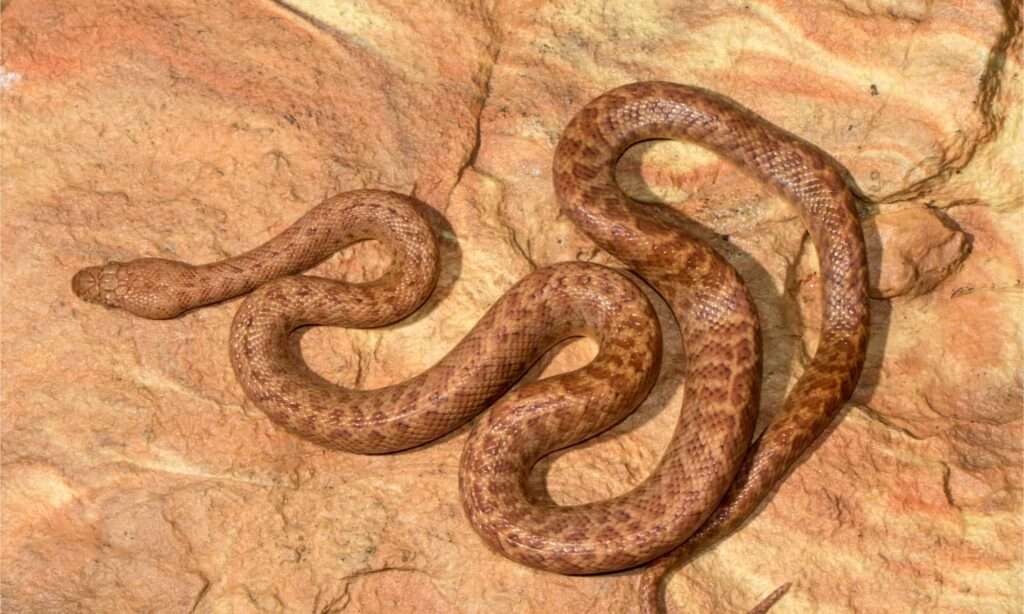
Description:
Scientific name: Antaresia perthensis
Life span: More than 25 years
Adults weigh close to 210 grams and reach a length of about 50 cm (19.5 in). Neonates are roughly 8 inches (20 cm) long and weigh 4 grams. They weigh on average 25 grams after a year. They are thus smaller than both the spotted python (A. maculosa) and the Children’s python (A. childreni). Compared to these other species, A. perthensis typically has a redder background ground color, and as it matures, its dots lose their contrast or become less pronounced. Childreni and maculosa, in comparison, have lighter-colored grounds and better-defined markings that last their entire lives.

Native Region/Habitat
Western Australia is home to the snake species known as the anthill python. As the smallest member of the Pythonidae family and frequent inhabitants of termite mounds, they are known by their popular names.
Behavior:
The nocturnal pygmy python emerges at night to feed. They spend the day curled up in a termite mound, which protects them and aids in thermoregulation. They rarely associate with other snakes and only do so on purpose during the breeding season. This species is unlikely to bite, and because of its gentle nature, it is quite pleasant to handle.
Care As a pet/In captivity:
This exotic pet snake is very well-liked. They rarely bite and are usually quiet and manageable. They are about as simple to maintain as a snake caretaker could ever imagine, similar to snakes in the children’s compound.
- Anthill pythons can be kept (and bred) in a tank as small as 20 gallons in captivity. While reptile-specific enclosures are preferable, temporary or permanent habitat can be provided by a straightforward fish tank.
- They might include fuzzy rats in addition to mice in their regular diet.
- Pythons require a range of temperatures, or temperature slope, across their living environment in order to adjust their body temperature and more easily digest food because they are ectothermic and require exterior heat foundations to regulate their body heat.
- Pythons require moisture, the precise amount of which varies by species. Buildings like swimming tarns can help an inclusion reach some amounts of moisture, but a hygrometer must always be present to ensure that good levels are maintained.
Table





